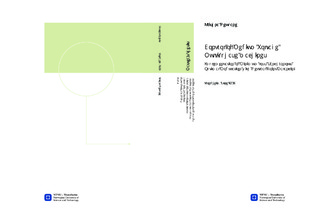| dc.contributor.advisor | Undeland, Tore Marvin | nb_NO |
| dc.contributor.advisor | Nilsen, Roy | nb_NO |
| dc.contributor.author | Neupane, Krishna | nb_NO |
| dc.date.accessioned | 2014-12-19T13:56:19Z | |
| dc.date.available | 2014-12-19T13:56:19Z | |
| dc.date.created | 2014-10-01 | nb_NO |
| dc.date.issued | 2014 | nb_NO |
| dc.identifier | 751722 | nb_NO |
| dc.identifier | ntnudaim:11839 | nb_NO |
| dc.identifier.uri | http://hdl.handle.net/11250/257956 | |
| dc.description.abstract | The total loss of an inverter can be reduced by reducing switching losses and harmonics losses. However, the harmonics increases with the reduction of switching frequency and special technique is required to get the overall losses at minimum value. The minimum loss synchronous pulse width modulation described here uses a minimization criterion function to be used with low switching frequency while getting the acceptable harmonics for the medium voltage multiphase drives. The approach uses the fixed set of optimized switching patterns generated by the programmed technique by minimizing the criterion function. Weighed Total Harmonic Distortion normalized to DC link voltage is used as the minimization parameter as it is directly related to the harmonics in the system. In order to get the optimization angels fast for any value of modulation index, the real time pattern generation method is used instead of storing the values into the memory. This approach has the possibility of adding offsets to overcome the effects such as DC link balancing and transient normalization. The number of pulses required at low amplitude modulation becomes very high while keeping switching frequency at acceptable range. This makes the complication for the calculation as well as implementation of Synchronous Optimal PWM at low amplitude modulation. It is therefore, asynchronous space vector modulation is prioritized for the low amplitude modulation. The technique of interrupt signal is used to effectively switch from one method of modulation to the other whenever required.Multilevel inverter has inherent problem of DC link imbalance, which must be addressed in order to get smooth operation. Many alternatives are purposed for the balancing and choice has to be made to get it work for both asynchronous and synchronous modulation. Further, the transient stability needs to be addressed for the system as it might force the system out of the stability and leading to many technical flaws. The real time operation of the synchronous optimal modulation requires, fast processing and executing processor. As such, Virtex-5 ppc440 FX30T is used which can operate at very high frequency. During this thesis, such an advanced system is simulated using the advanced computing software s and is implemented in the lab. A six-phase induction machine with the rating of 11.7 kW is used in the lab with the help of three-phase three-level inverter. Xilinx ISE suite is used as the medium to communicate between the hardware and software as well as to build the overall embedded system design. | nb_NO |
| dc.language | eng | nb_NO |
| dc.publisher | Institutt for elkraftteknikk | nb_NO |
| dc.title | Control of Medium Voltage Multi-phase machines: Implementation of Minimum loss Synchronous Optimal Modulation with Neutral Point Balancing | nb_NO |
| dc.type | Master thesis | nb_NO |
| dc.source.pagenumber | 155 | nb_NO |
| dc.contributor.department | Norges teknisk-naturvitenskapelige universitet, Fakultet for informasjonsteknologi, matematikk og elektroteknikk, Institutt for elkraftteknikk | nb_NO |

